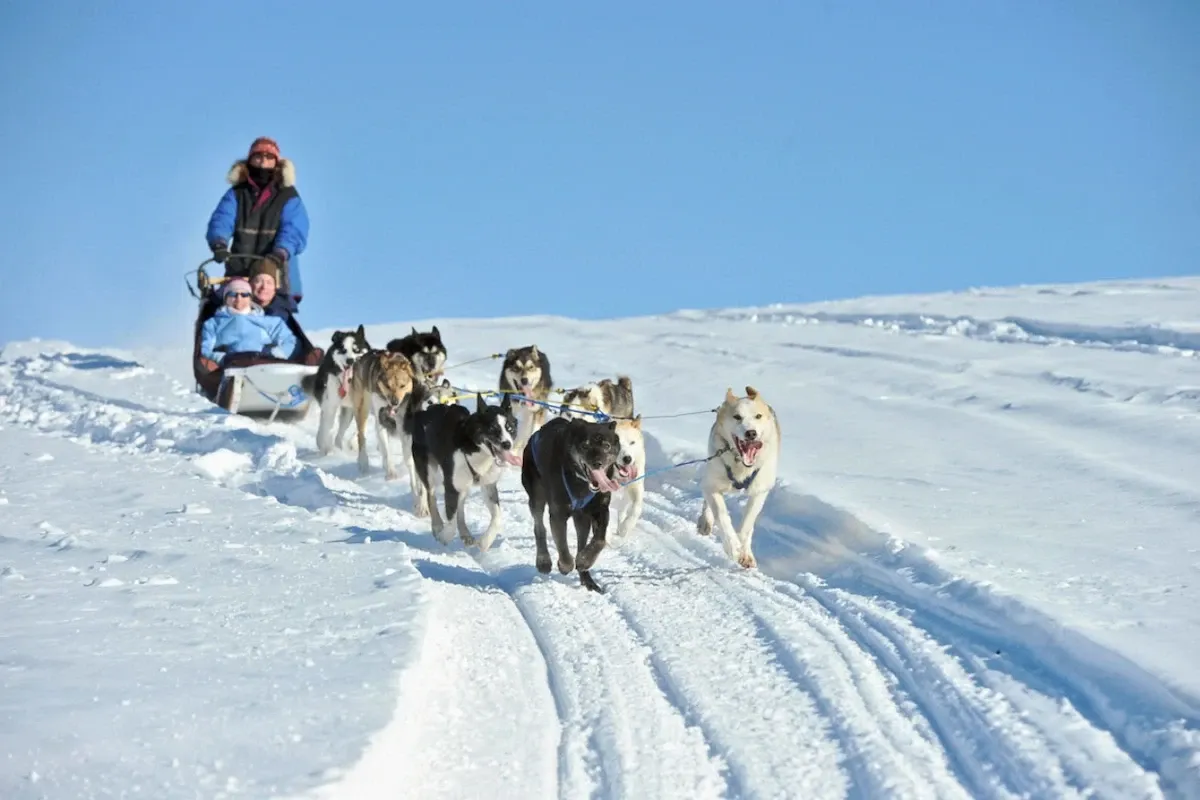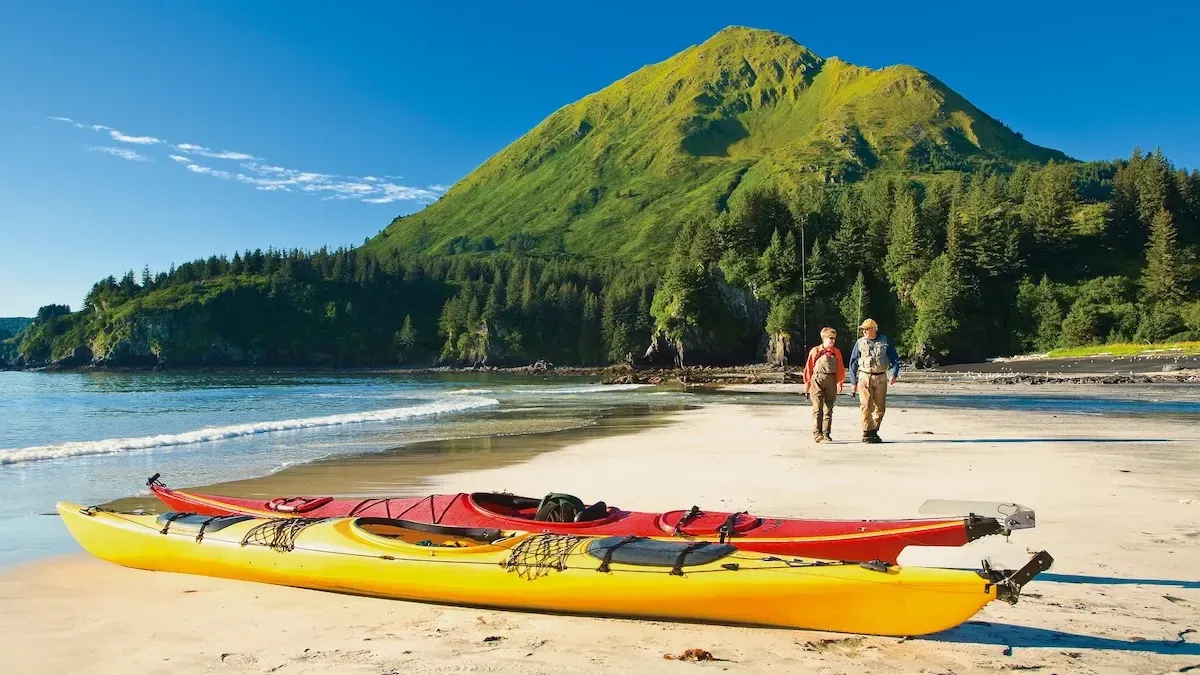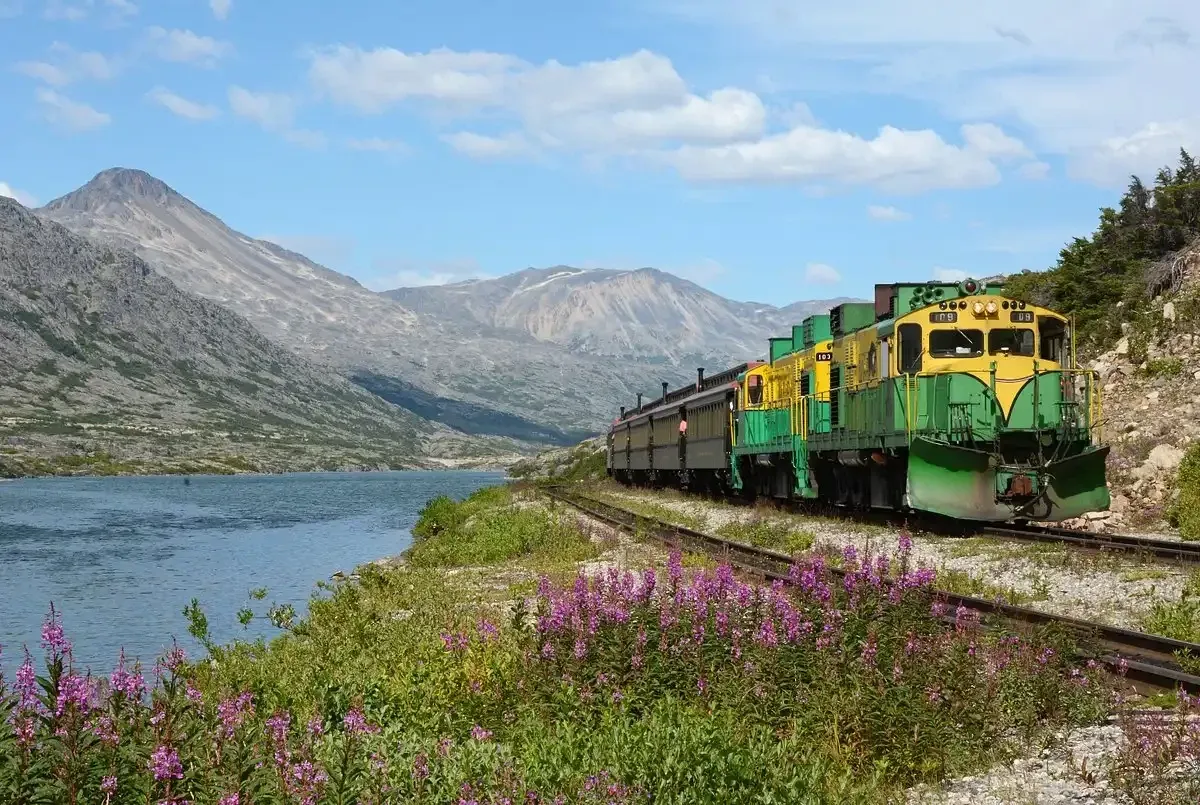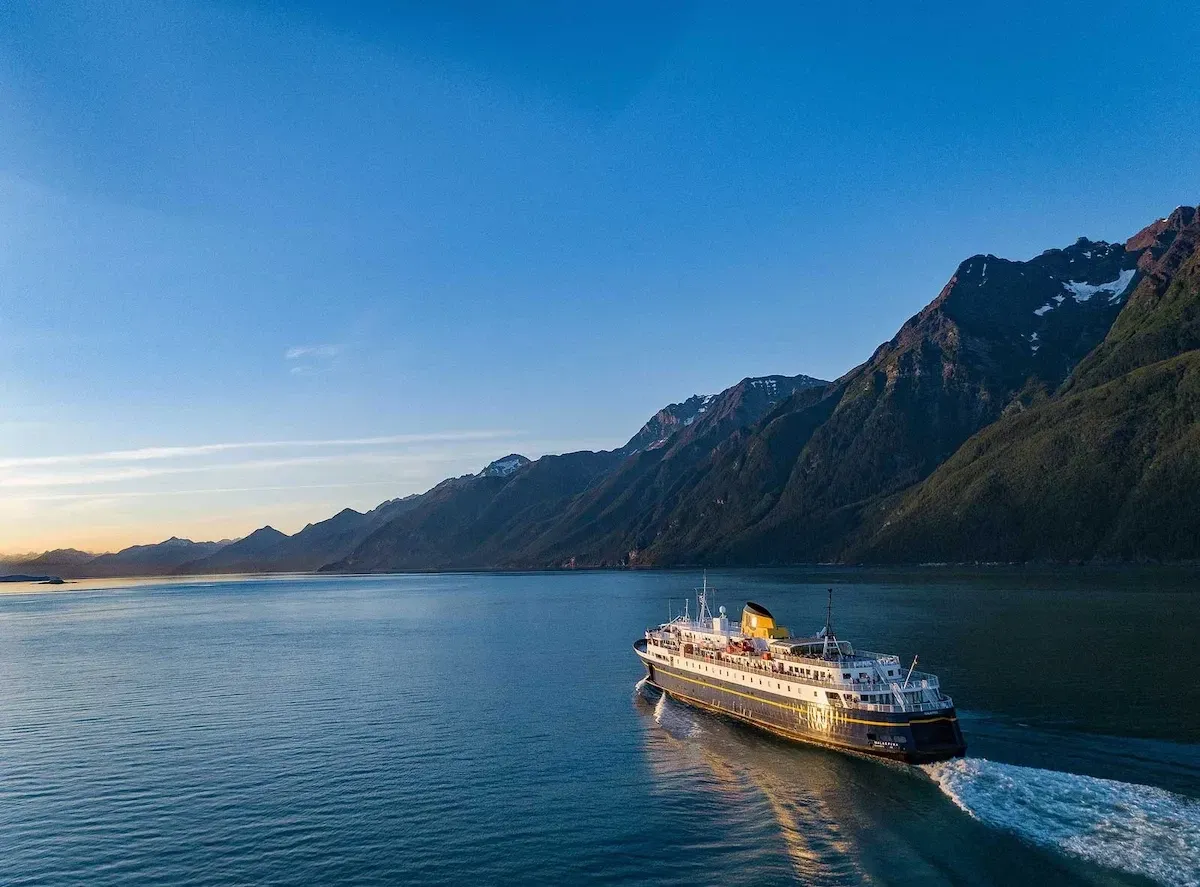Alaska, the land of wonders and wilderness, is renowned not only for its majestic mountains and magnificent glaciers but also as a haven for long-distance driving enthusiasts. Imagine yourself behind the wheel, cruising along winding roads through untouched nature, where each turn reveals a breathtaking landscape. Alaska is not just a destination; it’s a journey, and its roads are the threads that connect you to the wild heart of this land.
Dalton Highway – Conquering the Arctic Frontier
The Dalton Highway, also known as “Highway 11,” is one of the most adventurous and memorable driving routes in Alaska. This road stretches approximately 414 miles (666 km), beginning in Livengood, northwest of Fairbanks, and extending to Deadhorse near Prudhoe Bay on the Arctic Ocean coast. The Dalton Highway is not for the faint of heart, but the reward for those who dare to conquer it is a unique experience amidst harsh wilderness and stunning scenery.

The Dalton Highway was initially built as a supply road to support the Trans-Alaska Pipeline System project in the 1970s. Today, it has become a symbol of adventure and exploration. Along the way, you’ll cross the mighty Yukon River, traverse the towering Atigun Pass in the Brooks Range, and witness the landscape transform from dense taiga forest to vast Arctic tundra.
Highlights on the Dalton Highway:
- Yukon River: Stop at the Yukon River Bridge to admire the historic river and the untouched beauty of the surrounding land.
- Atigun Pass: Ascend Alaska’s highest mountain pass, where you can take in panoramic views of the Brooks Range and feel the grandeur of nature.
- Arctic Tundra: Near Deadhorse, the landscape shifts to barren tundra with frozen lakes and low vegetation, offering a completely different experience.
Driving Tips for the Dalton Highway:
- Vehicle Preparation: Ensure your vehicle is in good working order, with a spare tire, repair tools, and sufficient fuel, as gas stations are very limited.
- Weather Conditions: Arctic weather is unpredictable; check the forecast before you go and prepare for all conditions.
- Speed Limits: Maintain a safe speed, especially on gravel and slippery roads.
- Communication: Carry a satellite phone or emergency communication device, as cell phone service is weak or nonexistent.
Denali Highway – Majestic Views of the National Park
The Denali Highway, Alaska Route 8, is a 135-mile (217 km) route connecting Cantwell in the west and Paxson in the east. What makes the Denali Highway special is that it runs just outside the northern boundary of Denali National Park, offering stunning views of the majestic Denali (formerly known as McKinley) and the pristine mountain landscape.

Unlike the Dalton Highway, the Denali Highway is primarily gravel and dirt, but it is still navigable by two-wheel-drive vehicles or high-clearance vehicles. This route is open in the summer, typically from late May to September, when the weather is favorable and the scenery is at its most vibrant. Driving the Denali Highway is a fantastic opportunity to immerse yourself in nature, spot wildlife, and enjoy the tranquility of the Alaskan mountains.
Highlights on the Denali Highway:
- Denali Mountain: From many points along the highway, you can admire panoramic views of Denali, the highest peak in North America, especially on clear days.
- Denali National Park: Although it doesn’t go directly into the park, the Denali Highway runs along the northern boundary, allowing you to view the diverse landscapes of the park from outside.
- Wildlife Viewing: This area is home to many wildlife species, such as bears, caribou, Dall sheep, and foxes. Prepare your camera and binoculars to seize wildlife spotting opportunities.
- Fishing and Hiking: The Denali Highway offers numerous ideal stops for fishing and hiking. The lakes and rivers in the area are rich in salmon and arctic grayling.
Driving Tips for the Denali Highway:
- Suitable Vehicle: Two-wheel-drive or high-clearance vehicles are recommended for navigating gravel roads and rugged terrain.
- Speed: Drive slowly and carefully as the road can be rough and gravelly.
- Fuel: Fill up your gas tank before entering the highway as gas stations are very limited.
- Time: It is recommended to spend at least a day exploring the Denali Highway, possibly camping or staying overnight at campgrounds or lodges along the way.
Seward Highway – Exploring the Kenai Peninsula Coastline
The Seward Highway, Route 9, is one of the most beautiful and accessible driving routes in Alaska. This 125-mile (201 km) route connects Anchorage with Seward, the gateway to the Kenai Peninsula. The Seward Highway is not just a transportation route but also a journey to explore the diverse beauty of coastal landscapes, mountains, and glaciers.

The Seward Highway runs along Turnagain Arm, an inlet of Cook Inlet, famous for its dramatic tidal fluctuations. Along the way, you’ll admire the snow-capped Chugach Mountains, lush green coniferous forests, and crystal-clear lakes. Closer to Seward, the scenery transitions to a coastline with fjords, small islands, and glaciers flowing into the sea.
Highlights on the Seward Highway:
- Turnagain Arm: Stop at viewpoints along the arm to observe the tidal bore phenomenon and have a chance to spot beluga whales (especially in summer).
- Chugach Mountains: The majestic mountain range stretches along the highway, creating a stunning backdrop for your journey.
- Portage Glacier Lake: Take a short detour to the Portage Glacier area, where you can visit Portage Glacier and the Begich, Boggs Visitor Center.
- Seward Town: The end of the Seward Highway is the charming town of Seward, where you can join boat tours to explore Kenai Fjords National Park, visit the Alaska SeaLife Center, and experience Alaskan coastal life.
Driving Tips for the Seward Highway:
- Easy Driving: The Seward Highway is well-paved and easy to drive, suitable for all types of vehicles.
- Traffic: This is one of the most popular tourist routes in Alaska, especially in summer, so traffic can be heavy on weekends and holidays.
- Rest Stops: There are many rest stops, campgrounds, and lodges along the way, making it convenient for exploration and relaxation.
- Time: It is recommended to spend at least a day exploring the Seward Highway and its attractions.
Glenn Highway – A Historic Route Through Alaska’s Heart
The Glenn Highway, Route 1, is a 328-mile (528 km) route connecting Anchorage to Glennallen, the hub of the Copper River Valley. The Glenn Highway is not only a scenic road but also a journey through Alaska’s history and culture, traversing lands associated with gold mining, indigenous communities, and historical sites.

The Glenn Highway passes through diverse landscapes, from the fertile Matanuska-Susitna Valley to the majestic Chugach Mountains and the pristine Copper River Valley. Along the way, you’ll have the opportunity to explore historic small towns, abandoned gold mines, and remnants of the famous Iditarod Trail.
Highlights on the Glenn Highway:
- Matanuska-Susitna Valley: A fertile agricultural region with vast farms and peaceful countryside scenery.
- Matanuska River and Matanuska Glacier: Stop at viewpoints to admire the magnificent Matanuska Glacier and join glacier walk tours.
- Nelchina Canyon and Talkeetna Mountains: Majestic mountain scenery with deep canyons and snow-capped peaks.
- Palmer and Wasilla Towns: Explore Alaska’s agricultural and mining history in these two towns.
- Historical Sites: The Glenn Highway passes through many areas of historical significance, including Iditarod Trail stopover points and old gold mines.
Driving Tips for the Glenn Highway:
- Good Road Conditions: The Glenn Highway is well-paved and easy to drive, suitable for all types of vehicles.
- Time: It is recommended to spend at least a day exploring the Glenn Highway and its attractions.
- Combine with Richardson Highway: The Glenn Highway intersects with the Richardson Highway at Glennallen, forming a loop to explore central Alaska.
Richardson Highway – Connecting Past and Present
The Richardson Highway, Route 4, is the oldest highway in Alaska, stretching approximately 368 miles (592 km) from Fairbanks to Valdez, a beautiful coastal town on Prince William Sound. The Richardson Highway is not just a vital transportation route but also a journey through time, connecting Alaska’s pioneering past with its modern development.

The Richardson Highway traverses diverse landscapes, from dense taiga forests to the majestic Alaska Range and the spectacular Thompson Pass glacier region. Along the way, you’ll have the opportunity to explore historic towns, World War II relics, and stunning natural viewpoints.
Highlights on the Richardson Highway:
- Delta Junction: The end of the Trans-Alaska Pipeline, where you can visit the monument marking the completion of this historic project.
- Denali State Park: Enjoy panoramic views of Denali from the south and engage in outdoor activities like hiking, fishing, and kayaking.
- Thompson Pass: Traverse a high and magnificent mountain pass, known for record snowfall and stunning glacier scenery.
- Worthington Glacier: Stop at the Worthington Glacier State Recreation Site to get close to Worthington Glacier and learn about glaciology.
- Valdez Town: The end of the Richardson Highway is the charming town of Valdez, where you can join boat tours to explore Prince William Sound, visit the Valdez Museum Historical Archive, and enjoy the coastal atmosphere.
Driving Tips for the Richardson Highway:
- Good Road Conditions: The Richardson Highway is well-paved and easy to drive, suitable for all types of vehicles.
- Weather Conditions: Mountain weather can change rapidly, especially in Thompson Pass; check the forecast before you go and prepare for varying weather conditions.
- Rest Stops: There are many rest stops, campgrounds, and lodges along the way, making it convenient for exploration and relaxation.
Tips for Safe and Enjoyable Driving in Alaska
Driving in Alaska is a wonderful experience, but it also requires preparation and caution. Here are some tips for a safe and enjoyable driving trip:
- Vehicle Check: Ensure your vehicle is in good working condition, especially tires, brakes, and the cooling system.
- Prepare for Harsh Weather: Alaskan weather can change suddenly; bring warm clothing, rain gear, and other essentials.
- Carry Maps and GPS: Cell phone service is not available in all areas of Alaska; prepare paper maps and an offline GPS device.
- Refuel Regularly: Gas stations can be far apart, especially on remote routes; refuel whenever you have the opportunity.
- Drive Slowly and Carefully: Alaskan roads can have many curves, steep hills, and wildlife crossing the road; drive slowly and stay focused.
- Yield to Large Trucks: Many routes in Alaska are trucking routes; yield and maintain a safe distance.
- Enjoy the Scenery: Don’t forget to stop at viewpoints to admire and photograph Alaska’s stunning landscapes.
Conclusion
The untamed roads of Alaska are not just means of transportation but emotional journeys of discovery. From the adventurous Dalton Highway to the poetic Seward Highway, each route offers unique experiences and landscapes. If you are a driving enthusiast and passionate about exploring wilderness, come to Alaska and conquer these amazing roads for yourself. Surely, a driving trip in Alaska will be an unforgettable memory in your life.